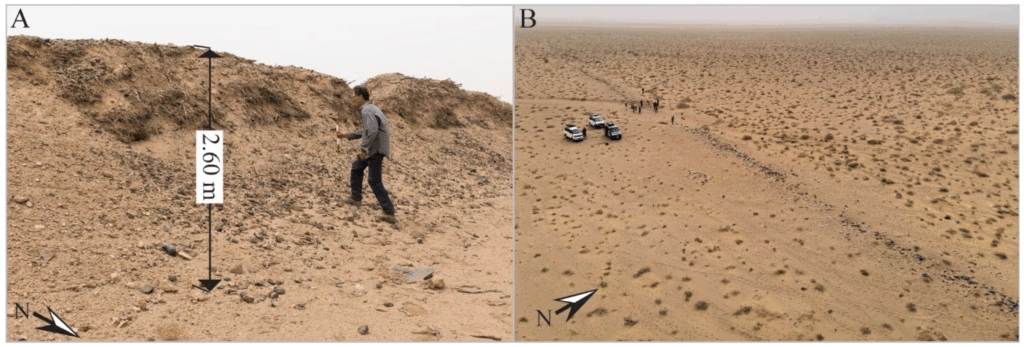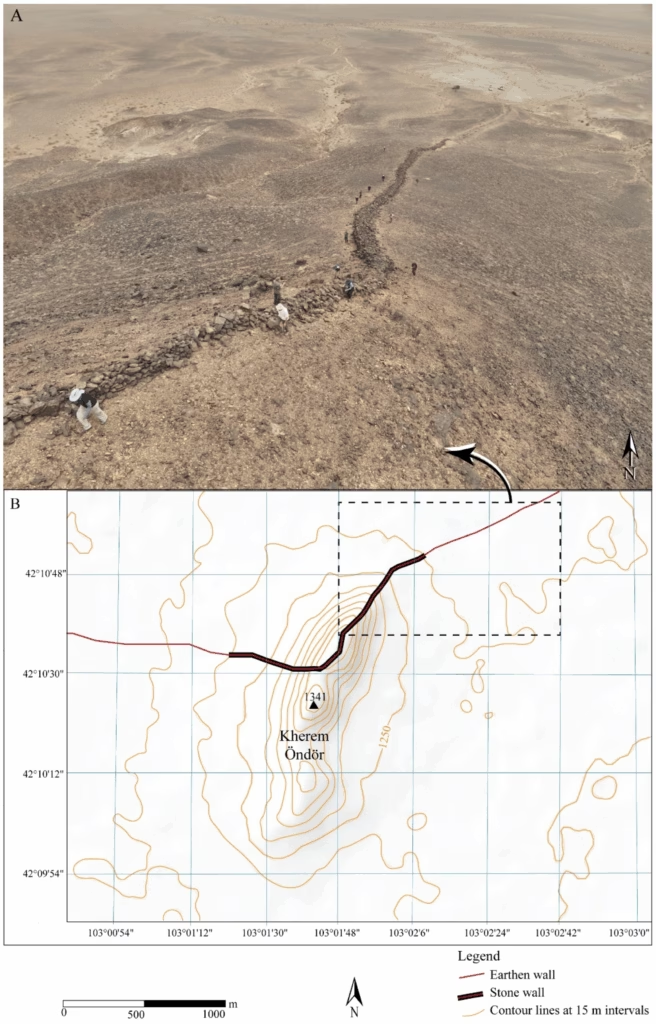An international team of archaeologists has made groundbreaking discoveries about the Gobi Wall, an ancient structure stretching over 320 kilometers across Mongolia’s arid desert. Long shrouded in mystery, this ancient construction is now understood to have played a far more significant role than previously believed.
Led by Professor Gideon Shelach-Lavi of the Hebrew University of Jerusalem, the research involved collaboration between experts from the National University of Mongolia and Yale University. The findings were recently published in the prestigious Land journal, shedding new light on the wall’s purpose and historical context.

More Than Just a Defense Line
According to the researchers, the Gobi Wall was primarily constructed during the rule of the Western Xia Dynasty (AD 1038–1227), a time marked by major political shifts and a growing emphasis on border control and resource management.
Unlike the Great Wall of China, which is often regarded solely as a military barrier, the Gobi Wall served multiple purposes. It was designed not only to deter invaders but also to manage resources, mark territorial boundaries, and strengthen imperial authority across the region.
Strategic Fortresses and Watch Stations
Along the length of the wall, forts and guard posts were placed at key points near vital natural resources such as water and timber. Builders took advantage of the surrounding terrain—mountain passes and sand dunes—to enhance the wall’s effectiveness. They also used locally available materials such as compacted earth, stone, and wood, showcasing their adaptation to the harsh desert environment.

Remarkably, archaeological evidence indicates that human activity in the area spans from the 2nd century BCE to the 19th century CE, suggesting that the wall maintained strategic importance for centuries.
Modern Techniques, Ancient Insights
Using modern technologies like remote sensing, on-site analysis, and targeted excavation, researchers were able to construct a clearer picture of the wall’s function and long-term significance. Professor Shelach-Lavi emphasized that the structure was not merely defensive but also a tool for managing movement, controlling trade, and exercising political power in a remote and challenging landscape.
Rethinking Imperial Borders in Inner Asia
This discovery invites a reassessment of how ancient empires in Inner Asia managed their frontiers. Once overlooked, the Gobi Wall now emerges as a fascinating example of how medieval governments shaped their environments to maintain control and support their populations.
https://doi.org/10.3390/land14051087
Cover Photo: Excavation at G05 at area. Credit: M. Ullman.





